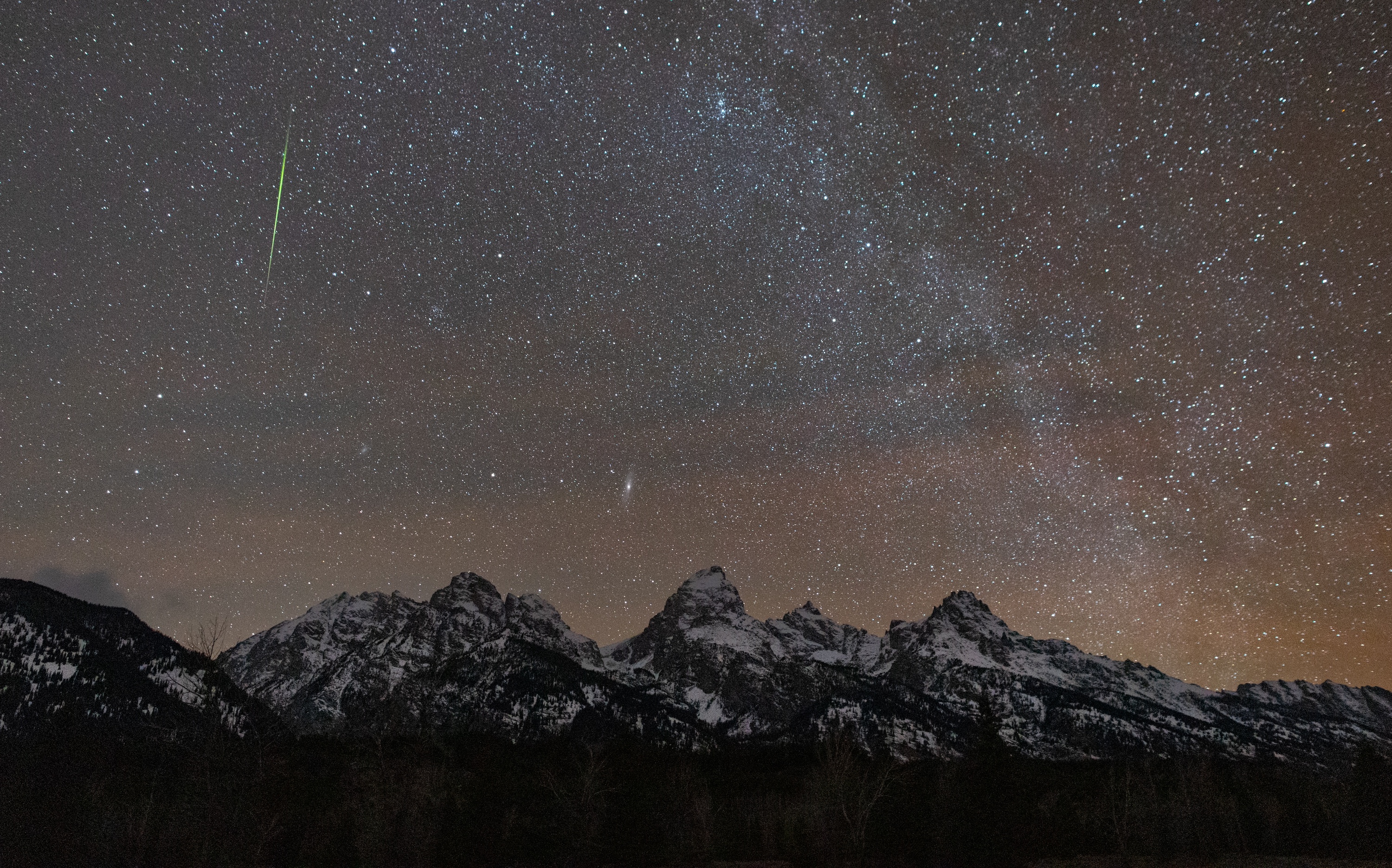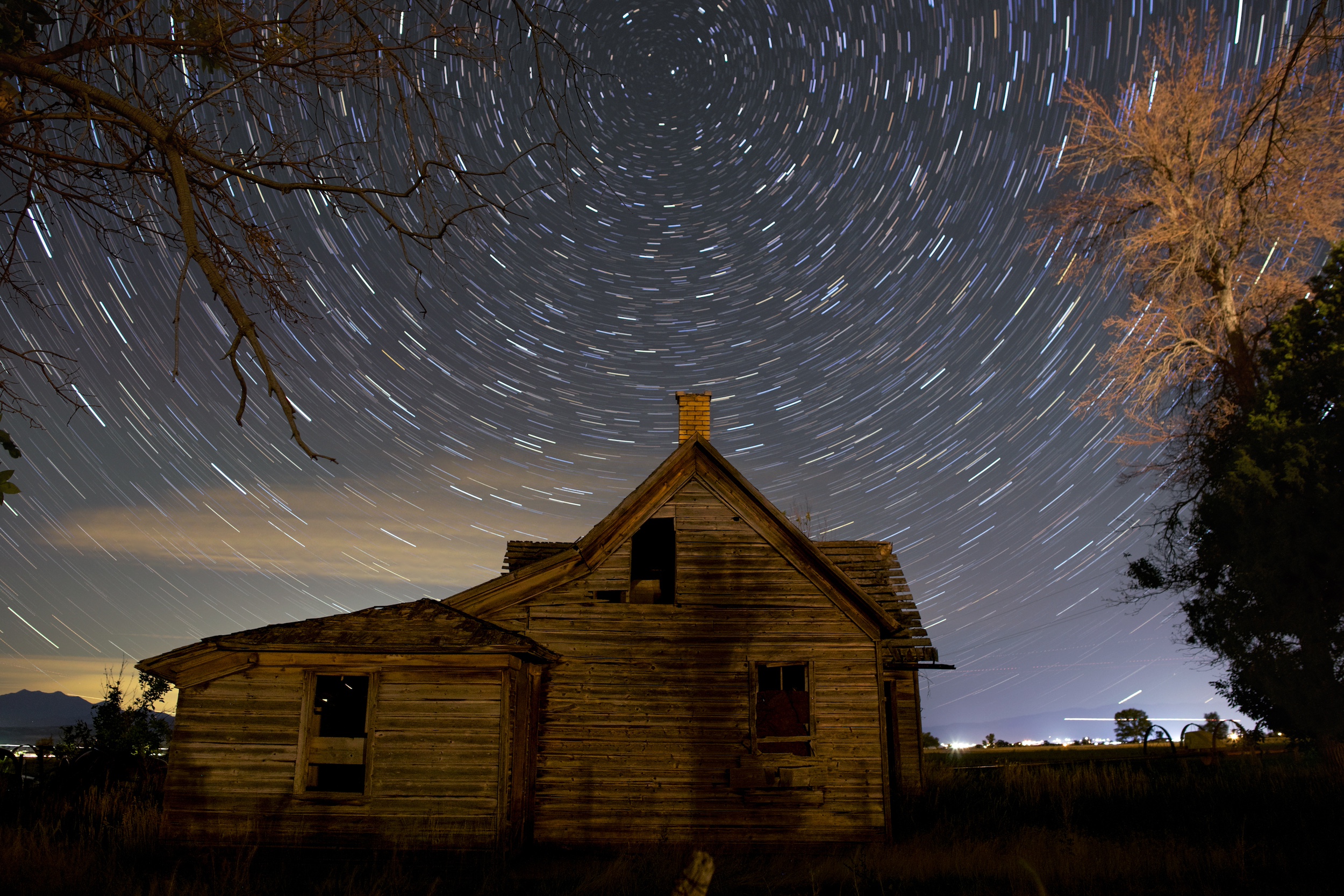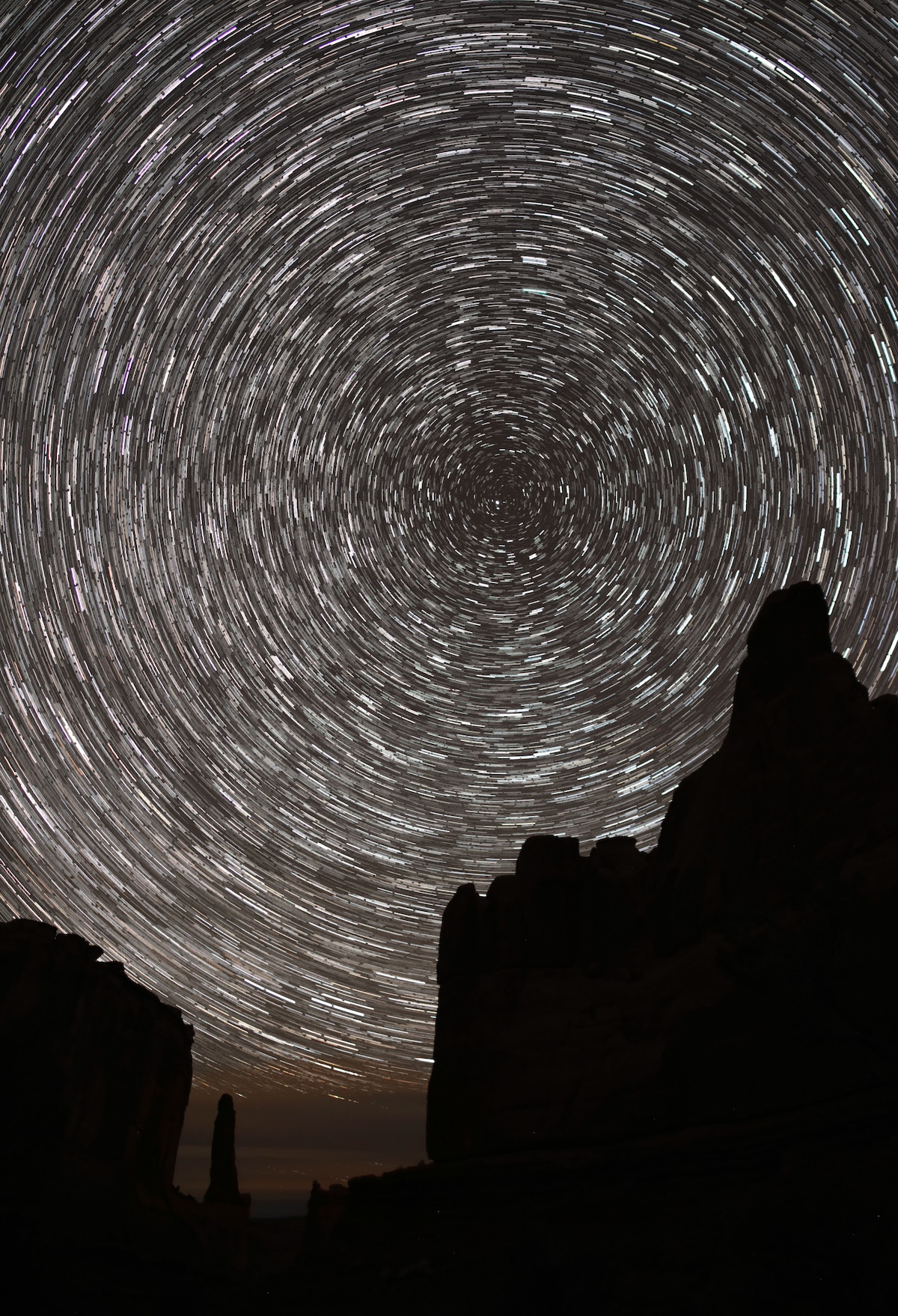
Grand Teton National Park, Wyoming on Nov. 13, 2023 | Credit: NASA/Bill Dunford | Full-size image and downloads
Everything in this photo is moving. Everything. In a fraction of a second, a meteor the size of sand grain flashes green as it enters the atmosphere. Over the course of a few minutes, the red airglow ripples. Across the ages, mountains take shape; this range began rising 10 million years ago, and is still thrusting upward now. (Ten million years isn't really that long. Remember the dinosaurs died out 65 million years ago. It took two million years just for the light of the Andromeda galaxy, seen here to the left of the tallest peak, to reach my camera lens.) Over the course of a few billion years the stars themselves are born, jostle positions, and burn out. From the dust they leave behind, new ones ignite.

Spring City, Utah on Sept. 10, 2023 | Credit: ©2023 Bill Dunford
One way to capture some of this motion is just to leave the camera shutter open for a loooong time (at least 40 minutes or so; you can also take a bunch of exposures and stack them on top of each other). The result is a star trail image like this one, which reveals the way Earth twirls by capturing the motion of the sky. The only star not moving is Polaris, the North Star, friend to navigators and anyone feeling a little dizzy.

Arches National Park, Utah on Jan. 31, 2023 | Credit: ©2023 Bill Dunford | Full-size image and downloads
More patience = better star trails. But you might notice a small gap in the these trails, the result of some dropped frames due to photographer error or a passing airplane, can't remember which. Sometimes it's not easy out there in the middle of nowhere in the middle of the night. Things that can sometimes make me pack up and move from a shooting location: the dreaded light pollution, too much car traffic, angry wind, the howls of coyote packs drawing ever nearer even though I'm mostly confident they won't hurt me.
This is the same spot, different night, as the Arches aurora shot. Bonus game: see if you can find one star — a little less than halfway between the North Star and the top of the image, and a little to the right — that is glowing more fuzzily than the rest, with a greenish tint. That's not a star, but a small comet! In still images it looked like a small, green patch of light.